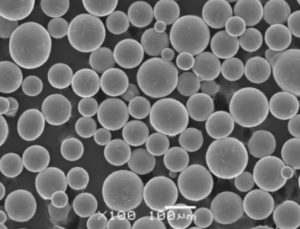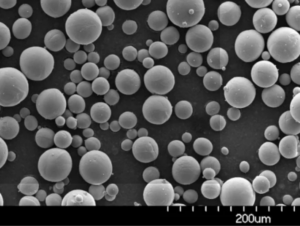Plazma atomizasyonu hassasiyeti ve verimliliği ile tanınan metal tozlarının imalatında kullanılan gelişmiş bir tekniktir. Bu makale, çeşitli yönlerini, uygulamalarını ve bu yöntemle üretilen metal tozlarının özel modellerini keşfederek plazma atomizasyonunun inceliklerine derinlemesine inmektedir. Bu kapsamlı kılavuzun sonunda, plazma atomizasyonunu ve modern imalat üzerindeki önemli etkisini tam olarak anlayacaksınız.
Plazma Atomizasyonuna Genel Bakış
Plazma atomizasyonu, yüksek sıcaklıklı bir plazma torcunun uygulanması yoluyla metal telini ince parçacıklara dönüştürerek yüksek kaliteli metal tozları üretmek için kullanılan bir işlemdir. Bu yöntem, katkısal imalat, havacılık ve tıbbi cihazlardaki uygulamalar için gerekli olan dar parçacık boyutu dağılımlarına sahip küresel tozlar üretme yeteneği nedeniyle tercih edilmektedir.
Anahtar Ayrıntılar
- Süreç: Metal telin plazma torcu kullanılarak toza dönüştürülmesi
- Uygulamalar: Katkısal imalat, havacılık, tıbbi cihazlar
- Avantajlar: Dar boyut dağılımına sahip yüksek kaliteli, küresel tozlar
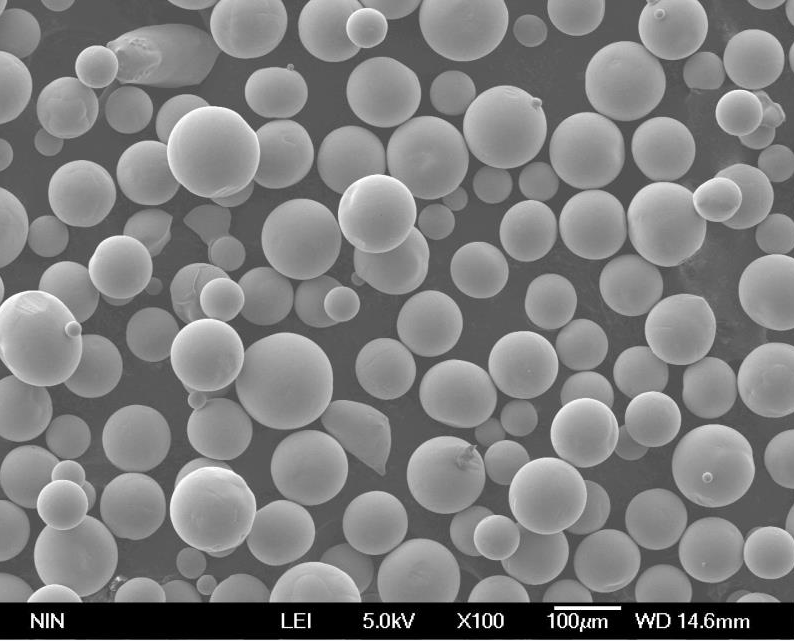
Tarafından Üretilen Metal Tozları Türleri Plazma Atomizasyonu
Tablo: Metal Tozlarının Türleri ve Özellikleri
| Metal Tozu Modeli | Kompozisyon | Mülkler | Özellikler |
|---|---|---|---|
| Ti-6Al-4V | Al ve V içeren titanyum alaşımı | Yüksek mukavemet, korozyon direnci | Havacılık ve tıbbi uygulamalar için idealdir |
| 316L Paslanmaz Çelik | Demir, Krom, Nikel, Molibden | Yüksek korozyon direnci, iyi mekanik özellikler | Tıbbi ve deniz ortamlarında kullanılır |
| Inconel 718 | Nikel-Krom alaşımı | Mükemmel yüksek sıcaklık dayanımı | Havacılık türbinleri için uygundur |
| AlSi10Mg | Silisyum, Magnezyum içeren alüminyum | Hafif, iyi termal özellikler | Otomotiv ve havacılık sektörlerinde yaygın |
| CoCrMo | Kobalt-Krom-Molibden alaşımı | Yüksek aşınma direnci, biyouyumluluk | Tıbbi implantlarda kullanılır |
| Hastelloy X | Nikel bazlı alaşım | Yüksek oksidasyon direnci, yüksek mukavemet | Yüksek sıcaklık ortamları için idealdir |
| CuNi2SiCr | Bakır-Nikel-Silisyum-Krom | Yüksek mukavemet, elektriksel iletkenlik | Elektrik ve deniz uygulamalarında kullanılır |
| Ti-48Al-2Cr-2Nb | Titanyum-Alüminyum alaşımı | Yüksek sıcaklık ve oksidasyon direnci | Türbin kanatları ve otomotiv için uygundur |
| 316F Paslanmaz Çelik | Demir, Krom, Nikel, Kükürt | Serbest işleme, yüksek korozyon direnci | Tıbbi aletler ve bileşenlerde tercih edilir |
| NiCrMo-4 | Nikel-Krom-Molibden alaşımı | Yüksek korozyon direnci, iyi kaynaklanabilirlik | Kimyasal işleme ekipmanlarında kullanılır |
Plazma Atomizasyon Metal Tozlarının Uygulamaları
Tablo: Uygulamalar ve Kullanım Alanları
| Uygulama Alanı | Özel Kullanım Alanları |
|---|---|
| Katmanlı Üretim | Karmaşık bileşenlerin, prototiplerin, özel parçaların 3B baskısı |
| Havacılık ve Uzay | Türbin kanatları, yapısal bileşenler, motor parçaları |
| Tıbbi Cihazlar | İmplantlar, cerrahi aletler, protezler |
| Otomotiv | Hafif bileşenler, motor parçaları, ısı eşanjörleri |
| Denizcilik | Korozyona dayanıklı bileşenler, pervaneler, vanalar |
| Elektrik | İletken malzemeler, konektörler, termal yönetim |
| Kimyasal İşleme | Yüksek sıcaklık reaktörleri, korozyona dayanıklı ekipmanlar |
Özellikler ve Standartlar Plazma Atomizasyonu Metal Tozları
Tablo: Spesifikasyonlar, Boyutlar, Sınıflar ve Standartlar
| Metal Tozu Modeli | Teknik Özellikler | Mevcut Boyutlar | Notlar | Standartlar |
|---|---|---|---|---|
| Ti-6Al-4V | ASTM B348, AMS 4928 | 15-45 µm, 45-106 µm | 5. Sınıf | ASTM, AMS |
| 316L Paslanmaz Çelik | ASTM A276, ASTM A240 | 20-53 µm, 53-150 µm | Sınıf 316L | ASTM, AMS, ISO |
| Inconel 718 | AMS 5662, AMS 5596 | 15-45 µm, 45-106 µm | Sınıf 718 | AMS, ASTM, ISO |
| AlSi10Mg | ISO 3522, DIN EN 1706 | 20-63 µm, 63-150 µm | Sınıf A360 | ISO, DIN |
| CoCrMo | ASTM F75, ASTM F1537 | 15-45 µm, 45-106 µm | Sınıf 1 | ASTM, ISO |
| Hastelloy X | AMS 5536, AMS 5754 | 15-45 µm, 45-106 µm | Sınıf X | AMS, ASTM, ISO |
| CuNi2SiCr | ASTM B151, ASTM B122 | 20-53 µm, 53-150 µm | Sınıf 1 | ASTM, ISO |
| Ti-48Al-2Cr-2Nb | ASTM B988, AMS 4911 | 15-45 µm, 45-106 µm | Sınıf 1 | ASTM, AMS |
| 316F Paslanmaz Çelik | ASTM A276, ASTM A240 | 20-53 µm, 53-150 µm | Sınıf 316F | ASTM, AMS, ISO |
| NiCrMo-4 | ASTM B575, ASTM B619 | 15-45 µm, 45-106 µm | Sınıf 4 | ASTM, ISO |
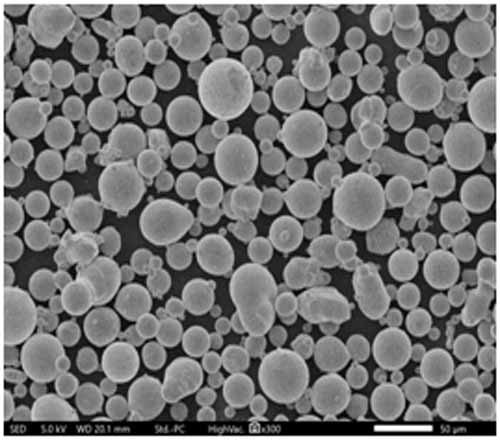
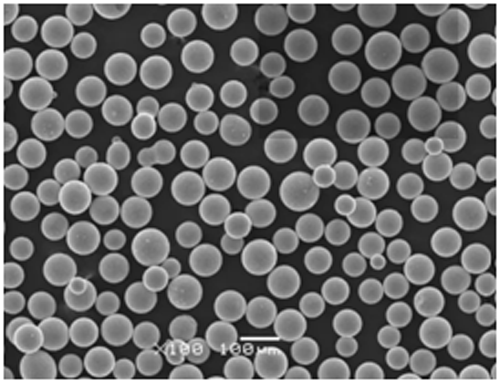
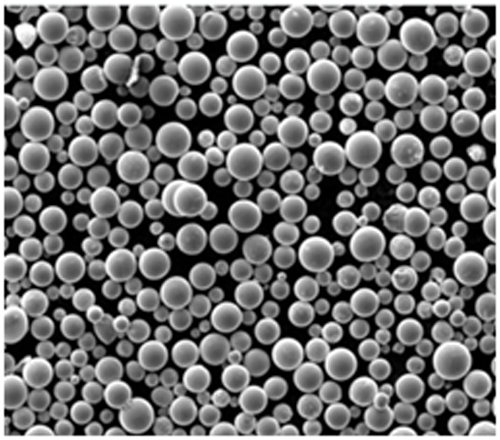
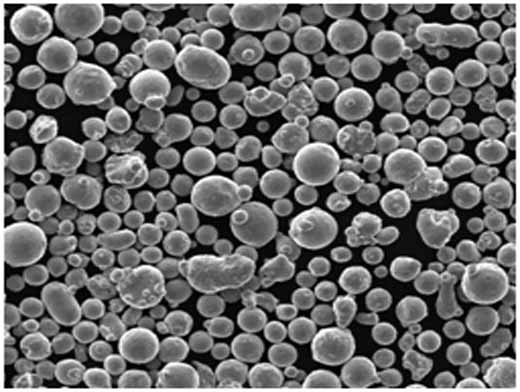
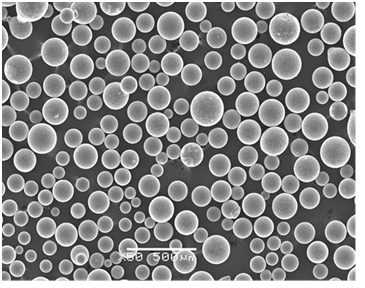
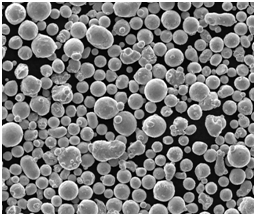
Tedarikçiler ve Fiyatlandırma Detayları
Tablo: Tedarikçiler ve Fiyatlandırma
| Tedarikçi | Metal Toz Modelleri | Fiyatlandırma (kg başına) | Ek Hizmetler |
|---|---|---|---|
| GKN Katkı Maddesi | Ti-6Al-4V, 316L Paslanmaz Çelik, Inconel 718 | $300 – $500 | Özel toz üretimi |
| Höganäs AB | AlSi10Mg, CoCrMo, Hastelloy X | $250 – $450 | Teknik destek, Ar-Ge hizmetleri |
| LPW Teknoloji | CuNi2SiCr, Ti-48Al-2Cr-2Nb, 316F Paslanmaz Çelik | $350 – $600 | Toz karakterizasyonu, test |
| Marangoz Katkısı | NiCrMo-4, Ti-6Al-4V, Inconel 718 | $280 – $550 | Uygulama mühendisliği desteği |
| AP&C (GE Katkı Maddesi) | Ti-6Al-4V, AlSi10Mg, CoCrMo | $320 – $480 | Büyük ölçekli üretim, kalite kontrol |
| Sandvik Osprey | 316L Paslanmaz Çelik, Hastelloy X | $260 – $470 | Metal tozu geri dönüşüm hizmetleri |
| Praxair Yüzey Teknolojileri | AlSi10Mg, CuNi2SiCr, NiCrMo-4 | $270 – $500 | Gelişmiş kaplamalar, yüzey işlemleri |
| Aubert & Duval | Ti-48Al-2Cr-2Nb, 316F Paslanmaz Çelik | $290 – $520 | Özelleştirilmiş alaşımlar, özel sınıflar |
| Arcam AB (GE Additive) | Ti-6Al-4V, Inconel 718 | $310 – $530 | Katkısal imalat çözümleri |
| Vacuumschmelze GmbH | CoCrMo, Hastelloy X, NiCrMo-4 | $300 – $490 | Yüksek saflıkta metal tozları |
Avantajları ve Sınırlamaları Plazma Atomizasyonu
Tablo: Artıları ve Eksileri Karşılaştırması
| Aspect | Avantajlar | Sınırlamalar |
|---|---|---|
| Toz Kalitesi | Yüksek küresellik, düzgün parçacık boyutu | İlk kurulum maliyeti yüksektir |
| Malzeme Aralığı | Çok çeşitli metal ve alaşımları işleyebilir | Bazı malzemeler özel plazma ayarları gerektirebilir |
| Üretim Verimliliği | Yüksek verim, minimum atık | Enerji yoğun süreç |
| Uygulama Çok Yönlülüğü | Çeşitli yüksek teknoloji uygulamaları için uygundur | Yetenekli işletme ve bakım gerektirir |
| Ölçeklenebilirlik | Endüstriyel üretim için ölçeklenebilir | Ekipman ve bakım maliyetleri |
| Çevresel Etki | Diğer yöntemlere göre daha az atık | Hâlâ yenilenemeyen enerji kaynaklarına bağımlı |
Plazma Atomizasyon Metal Tozlarının Özellikleri
Tablo: Bileşim ve Özellikler
| Metal Tozu Modeli | Kompozisyon | Özellikler |
|---|---|---|
| Ti-6Al-4V | 90 Ti, %6 Al, %4 V | Yüksek mukavemet/ağırlık oranı, korozyona dayanıklı |
| 316L Paslanmaz Çelik | Fe, Cr, Ni, %2 Mo | Mükemmel korozyon direnci, biyouyumlu |
| Inconel 718 | -55 Ni, -21 Cr, %4,75-5,5 Nb, %2,8-3,3 Mo | Yüksek sıcaklık performansı, oksidasyona dayanıklı |
| AlSi10Mg | Al, Si, %1 Mg | Hafif, iyi termal iletkenlik |
| CoCrMo | -65 Co, -30 Cr, %5-7 Mo | Yüksek aşınma direnci, biyouyumlu |
| Hastelloy X | Ni, Cr, Fe, %9 Mo | Mükemmel yüksek sıcaklık dayanımı |
| CuNi2SiCr | Cu, %2 Ni, %0,6 Si, %0,4 Cr | Yüksek elektriksel iletkenlik, korozyona dayanıklı |
| Ti-48Al-2Cr-2Nb | Ti, Al, %2 Cr, %2 Nb | Yüksek sıcaklık ve oksidasyon direnci |
| 316F Paslanmaz Çelik | Fe, Cr, Ni, %2 Mo, %0,15 S | Serbest işleme, yüksek korozyon direnci |
| NiCrMo-4 | -60 Ni, -22 Cr, %8-10 Mo | Korozyona dayanıklı, iyi kaynaklanabilirlik |
Karşılaştırma Plazma Atomizasyonu Diğer Yöntemlere
Plazma atomizasyonu, yüksek kaliteli, homojen tozlar üretme yeteneği sayesinde gaz atomizasyonu ve mekanik öğütme gibi diğer toz üretim yöntemleri arasında öne çıkmaktadır. Ancak, gerçekten nasıl karşılaştırılıyor?
Tablo: Plazma Atomizasyonu ve Diğer Yöntemler
| Yöntem | Plazma Atomizasyonu | Gaz Atomizasyonu | Mekanik Öğütme |
|---|---|---|---|
| Toz Kalitesi | Yüksek küresellik, dar boyut dağılımı | İyi küresellik, daha geniş boyut aralığı | Düzensiz şekiller, geniş boyut dağılımı |
| Malzeme Çok Yönlülüğü | Geniş yelpazede metal ve alaşımlar | Geniş yelpaze ancak bazı sınırlamalar | Belirli malzemelerle sınırlı |
| Verimlilik | Yüksek verim, minimum atık | Orta verim, bir miktar atık | Daha düşük verim, önemli atık |
| Ölçeklenebilirlik | Endüstriyel üretim için ölçeklenebilir | Ölçeklenebilir ancak büyük ölçekte daha az verimli | Sınırlı ölçeklenebilirlik |
| Maliyet | Yüksek ilk kurulum, daha düşük işletme maliyetleri | Orta düzeyde kurulum ve işletme maliyetleri | Daha düşük kurulum maliyeti, daha yüksek işletme maliyetleri |
| Enerji Tüketimi | Enerji yoğun | Plazmaya göre daha az enerji yoğun | Orta düzeyde enerji tüketimi |
| Uygulamalar | Yüksek teknoloji uygulamaları | Yüksek teknoloji dahil geniş yelpaze | Yüksek teknoloji uygulamaları için daha az uygun |
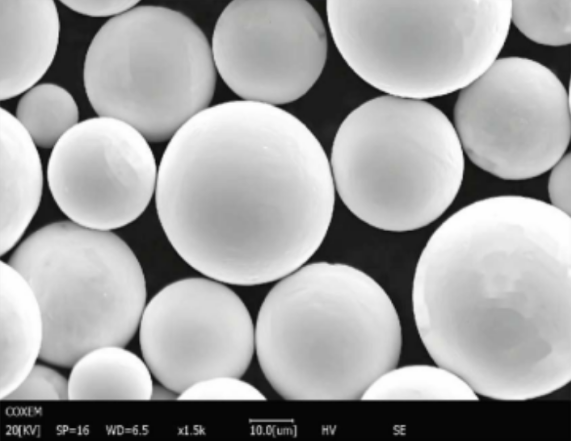
SSS
Tablo: Plazma Atomizasyonu Hakkında SSS
| Soru | Cevap |
|---|---|
| Plazma atomizasyonu nedir? | Metal telin yüksek sıcaklıklı bir plazma meşalesi kullanılarak ince tozlara dönüştürüldüğü bir işlemdir. |
| Plazma atomizasyonunun faydaları nelerdir? | Gelişmiş imalat uygulamaları için ideal olan, dar boyut dağılımlarına sahip, yüksek kaliteli, küresel tozlar üretir. |
| Hangi endüstriler plazma atomize tozları kullanır? | Havacılık, tıbbi cihazlar, otomotiv, denizcilik, elektrik ve kimyasal işleme endüstrileri. |
| Plazma atomizasyonu diğer yöntemlerle nasıl karşılaştırılır? | Daha iyi küresellik ve homojenliğe sahip daha yüksek kaliteli tozlar sunar ancak daha yüksek ilk kurulum maliyetleri ile birlikte gelir. |
| Plazma atomizasyonu kullanılarak hangi malzemeler işlenebilir? | Titanyum alaşımları, paslanmaz çelikler, nikel alaşımları, alüminyum alaşımları ve daha fazlası dahil olmak üzere geniş bir yelpaze. |
| Plazma atomizasyonu çevre dostu mudur? | Diğer yöntemlere göre daha az atık üretir ancak enerji yoğundur ve yenilenemeyen enerji kaynaklarına bağımlıdır. |
| Plazma atomizasyonu büyük üretim için ölçeklendirilebilir mi? | Evet, endüstriyel üretim için ölçeklenebilir, bu da onu yüksek hacimli imalat için uygun hale getirir. |
| Plazma atomizasyonunun sınırlamaları nelerdir? | Yüksek ilk kurulum maliyetleri, enerji tüketimi ve yetenekli işletme ve bakım ihtiyacı. |
| Plazma atomizasyonundan elde edilen toz kalitesi, katkısal imalata nasıl fayda sağlar? | Yüksek küresellik ve düzgün parçacık boyutu, 3B baskılı parçaların tutarlılığını ve kalitesini artırır. |
| Plazma atomizasyonu ile ilgili herhangi bir güvenlik endişesi var mı? | İlgili yüksek sıcaklıklar ve enerji nedeniyle güvenlik önlemleri gereklidir, ancak uygun protokollerle güvenlidir. |
